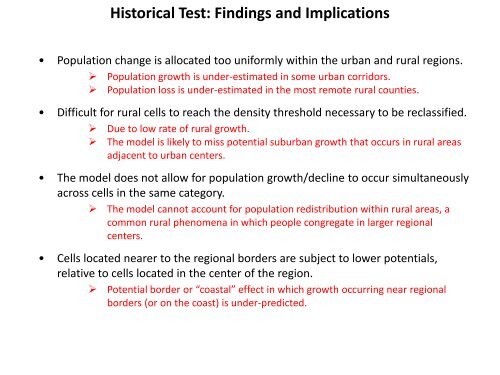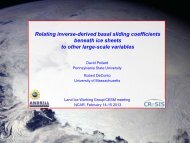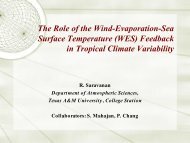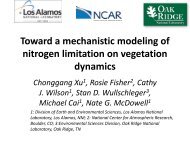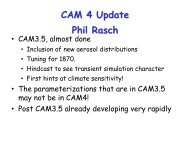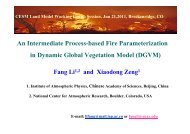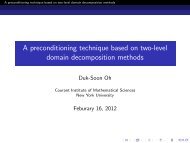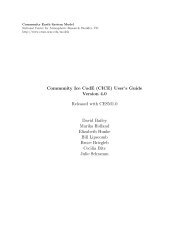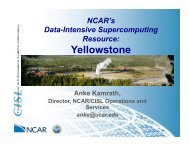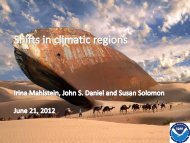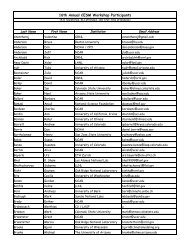Modeling spatial population scenarios
Modeling spatial population scenarios
Modeling spatial population scenarios
You also want an ePaper? Increase the reach of your titles
YUMPU automatically turns print PDFs into web optimized ePapers that Google loves.
Historical Test: Findings and Implications<br />
• Population change is allocated too uniformly within the urban and rural regions.<br />
Population growth is under-estimated in some urban corridors.<br />
Population loss is under-estimated in the most remote rural counties.<br />
• Difficult for rural cells to reach the density threshold necessary to be reclassified.<br />
Due to low rate of rural growth.<br />
The model is likely to miss potential suburban growth that occurs in rural areas<br />
adjacent to urban centers.<br />
• The model does not allow for <strong>population</strong> growth/decline to occur simultaneously<br />
across cells in the same category.<br />
The model cannot account for <strong>population</strong> redistribution within rural areas, a<br />
common rural phenomena in which people congregate in larger regional<br />
centers.<br />
• Cells located nearer to the regional borders are subject to lower potentials,<br />
relative to cells located in the center of the region.<br />
Potential border or “coastal” effect in which growth occurring near regional<br />
borders (or on the coast) is under-predicted.


